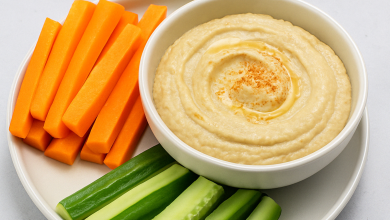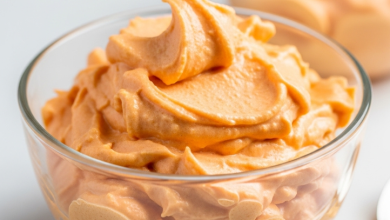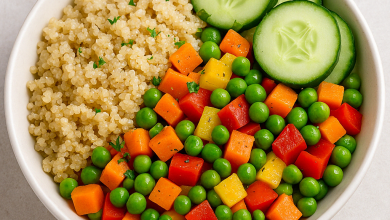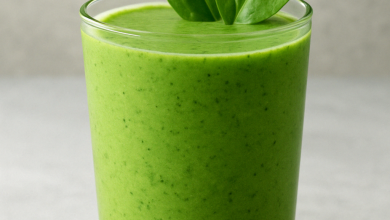
Introduction
Sourdough scones are soft, flaky, and full of flavor. They are a beautiful blend of a classic scone and the wonderful tang of sourdough starter. The gentle sour flavor makes each bite unique and comforting. The texture is tender inside and slightly crisp on the edges, just the way a good scone should be. This recipe uses a sourdough starter to give the scones a light rise and a pleasant depth of flavor that you cannot get from regular baking powder scones. Whether you make them plain or add fruits like blueberries or cranberries, every bite will taste like a bakery treat made at home.
People love sourdough scones because they bring together the best of two baking worlds. They have the rustic taste of traditional sourdough bread and the buttery richness of classic scones. Each bite feels both homely and special at the same time. Many people enjoy them for breakfast, brunch, or as an afternoon snack with tea or coffee. They are also a great way to use up your sourdough discard instead of throwing it away. The slightly tangy flavor from the starter balances the sweetness perfectly and gives the scones a light, airy texture.
Sourdough scones are perfect for many reasons. They are wonderful when you want a warm, homemade baked good that does not take too much time. They can be enjoyed as a treat after a long day or shared with family on a lazy weekend morning. Making scones from scratch gives a sense of comfort and satisfaction that you simply cannot find in store-bought pastries. They are also a bit healthier than regular scones because the sourdough fermentation makes the dough easier to digest and gives it a rich flavor without needing too much sugar. Whether you love baking or are just starting out, this recipe is simple, fun, and rewarding.
Ingredients You Will Need
For the Scones
- 2 cups of all purpose flour
- 1 tablespoon of baking powder
- ½ teaspoon of baking soda
- ½ teaspoon of salt
- ⅓ cup of granulated sugar
- ½ cup of cold unsalted butter, cut into small cubes
- ¾ cup of sourdough starter (active or discard)
- ⅓ cup of cold heavy cream or milk
- 1 teaspoon of vanilla extract
Optional Add-ins
- ½ cup of blueberries, raisins, or cranberries
- ¼ cup of chopped nuts such as almonds or walnuts
- 1 teaspoon of lemon zest or orange zest for a fresh flavor
For the Topping
- 1 tablespoon of cream or milk for brushing
- 1 tablespoon of coarse sugar for sprinkling
Step by Step Method
Step 1: Prepare your baking area
Preheat your oven to 400 degrees Fahrenheit and line a baking sheet with parchment paper. Having everything ready before you start will make the process smooth and easy. Measure all your ingredients accurately because baking is a science that rewards precision.
Step 2: Mix the dry ingredients
In a large mixing bowl, combine the flour, baking powder, baking soda, salt, and sugar. Use a whisk to mix them evenly. This step ensures that all the leavening agents and sugar are well distributed throughout the flour.
Step 3: Cut in the butter
Add the cold butter cubes into the flour mixture. Use a pastry cutter, fork, or your fingertips to rub the butter into the flour until it forms small crumbs. The mixture should look a bit like coarse sand with small pea-sized bits of butter. Keeping the butter cold is very important because it helps create flaky layers in your scones when they bake.
Step 4: Add the sourdough starter
Pour the sourdough starter into the flour and butter mixture. Add the vanilla extract and the cold cream or milk. Stir gently with a spoon or spatula until the dough starts to come together. Do not overmix. The dough should be soft but not sticky. If it feels too dry, add one tablespoon of milk at a time until it comes together.
Step 5: Add the extras
If you want to include fruits, nuts, or zest, gently fold them into the dough at this stage. Make sure they are evenly spread but do not knead too much or the scones will become tough.
Step 6: Shape the dough
Turn the dough out onto a lightly floured surface. Gently pat it into a round shape about one inch thick. Use a knife or bench scraper to cut the dough into eight equal triangles, just like slicing a pizza. You can also use a round cutter if you prefer traditional round scones.
Step 7: Arrange and brush
Place the shaped scones onto the prepared baking sheet, leaving some space between each piece. Brush the tops with cream or milk to help them brown nicely. Sprinkle a little coarse sugar on top for extra crunch and a touch of sweetness.
Step 8: Bake the scones
Bake in the preheated oven for about 18 to 22 minutes or until the tops are golden brown and the centers are fully cooked. The baking time may vary depending on your oven, so keep an eye on them during the last few minutes.
Step 9: Cool and serve
Once the scones are baked, remove them from the oven and let them cool on a wire rack for about 10 minutes. Serve them warm with butter, jam, or clotted cream. You can also drizzle honey or add a spoonful of whipped cream for a more decadent treat.
Step 10: Store for later
If you have leftovers, store them in an airtight container at room temperature for up to two days or refrigerate for up to five days. To reheat, warm them in the oven at 300 degrees Fahrenheit for about five minutes to bring back the freshness.
Why This Recipe Is Special
Sourdough scones are special because they combine tradition, flavor, and health benefits in one easy recipe. The sourdough starter gives them a gentle tangy taste that makes them stand out from regular scones. The fermentation process in sourdough helps break down gluten and improves digestion. It also adds a complex flavor that becomes richer as the scones bake. Unlike store-bought pastries filled with preservatives, homemade sourdough scones are made from fresh ingredients that you can trust.
They are also very versatile. You can make them sweet or savory depending on your mood. If you prefer sweet scones, add dried fruits or chocolate chips. If you like savory scones, skip the sugar and add grated cheese, herbs, or cooked bacon bits. This flexibility makes the recipe fun for everyone because you can personalize it however you like.
Another reason this recipe is special is the emotional connection it creates. Baking sourdough scones fills your home with a warm, buttery aroma that feels comforting and welcoming. It reminds many people of their childhood or special family breakfasts. Sharing a batch of freshly baked scones with loved ones can turn an ordinary morning into something memorable.
Lastly, sourdough scones are a great way to use leftover sourdough starter. Many bakers often throw away the extra starter during feeding, but this recipe gives it a new purpose. It not only reduces waste but also turns that discard into something delicious. Every bite of these scones tells a story of creativity and love for homemade food.
Extra Tips for Better Taste
- Keep everything cold. Cold butter and cold cream make the scones flaky. If your kitchen is warm, place the butter cubes in the freezer for ten minutes before using.
- Do not overmix. The secret to tender scones is mixing the dough only until it comes together. Overworking will make them dense and tough.
- Add flavor variations. Try mixing in cinnamon, nutmeg, or even shredded coconut for new flavor twists.
- Rest the dough. Letting the dough rest in the refrigerator for about 15 minutes before baking helps the gluten relax and improves texture.
- Use a sharp knife or cutter. Clean cuts help the scones rise better in the oven.
- Brush with egg wash. If you want shiny, golden tops, brush the scones with a beaten egg instead of milk.
- Freeze for later. You can freeze unbaked scones and bake them directly from frozen. Just add two to three extra minutes to the baking time.
- Add a glaze. Mix powdered sugar with a little milk or lemon juice and drizzle over the cooled scones for a bakery-style finish.
- Pair with spreads. Serve with butter, jam, or lemon curd for extra flavor.
- Experiment with shapes. Make mini scones for snacks or larger ones for a hearty breakfast.
Final Thoughts
Making sourdough scones at home is one of the most satisfying baking experiences. The process is simple, the ingredients are basic, and the results are always delightful. The gentle sour flavor, flaky texture, and golden crust make them a perfect treat for any time of the day. They go beautifully with tea, coffee, or even a glass of milk.
Baking these scones can become a lovely weekend tradition. You can enjoy them fresh out of the oven with melted butter or save some for later in the week. Every time you bake them, you can experiment with new ingredients and flavors, making them a fun and creative recipe to return to again and again.
Most importantly, sourdough scones remind us that baking does not have to be complicated to be rewarding. With a few simple ingredients and a bit of patience, you can create something truly special that brings warmth and joy to your kitchen. So next time your sourdough starter needs a purpose, try making these scones and share them with the people you love.
Nutrition Details
| Nutrient | Amount per serving (1 scone) |
| Calories | 240 |
| Carbohydrates | 30 g |
| Protein | 5 g |
| Fat | 11 g |
| Saturated Fat | 6 g |
| Fiber | 2 g |
| Sugar | 7 g |
| Sodium | 230 mg |
| Calcium | 80 mg |
| Iron | 1 mg |
These values are approximate and can vary depending on the exact ingredients and add-ins used.
Disclaimer
This recipe is for general enjoyment and should be eaten in moderation. Everyone’s body is different, and results may vary depending on dietary needs and health conditions. If you have allergies to ingredients like dairy, gluten, or nuts, please use suitable substitutes or avoid those ingredients. Always consult with your doctor or nutritionist if you have specific dietary restrictions. Enjoy your sourdough scones responsibly and remember that balance is the key to a happy and healthy lifestyle.





